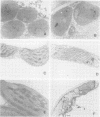Abstract
The activities of three enzymes of phenolic biosynthesis and six of general metabolism were studied at 24-hour intervals between the 3rd and 8th day after planting in barley shoots treated with the chlorosis-inducing herbicide Sandoz 6706 and grown in the dark or under high or low intensity light. The herbicide had no effect on fresh weight or soluble protein (per shoot) in plants grown in the dark or under low intensity light, but slightly decreased these parameters in plants grown for more than 5 days under high intensity light. In dark-grown seedlings the herbicide had no detectable effects on plastid ultrastructure or on the activity of malate dehydrogenase, cytochrome c oxidase, NADP-cytochrome c reductase, triose phosphate isomerase, peroxidase, catalase, shikimate dehydrogenase, phenylalanine ammonia-lyase, or chalcone-flavanone isomerase. Under low intensity light, Sandoz 6706-treated plants developed plastids with single thylakoids extending across the organelle, and the activity of all enzymes examined was increased to varying degrees. When the herbicide-treated plants were grown under high intensity light, plastid lamellar organization was severely disrupted. Activities of shikimate dehydrogenase and chalcone-flavanone isomerase were markedly enhanced, phenylalanine ammonia-lyase activity slightly promoted, and catalase activity severely inhibited. The other enzymes were not appreciably affected by Sandoz 6706 under high intensity light. It is concluded that the changes in plastid ultrastructure and enzyme activities of the herbicide-treated plants are largely secondary photomorphogenetic or photooxidative responses in the carotenoid-free plants in which chlorophylls accumulate in reduced amounts (low intensity light) or are completely absent (high intensity light).
Full text
PDF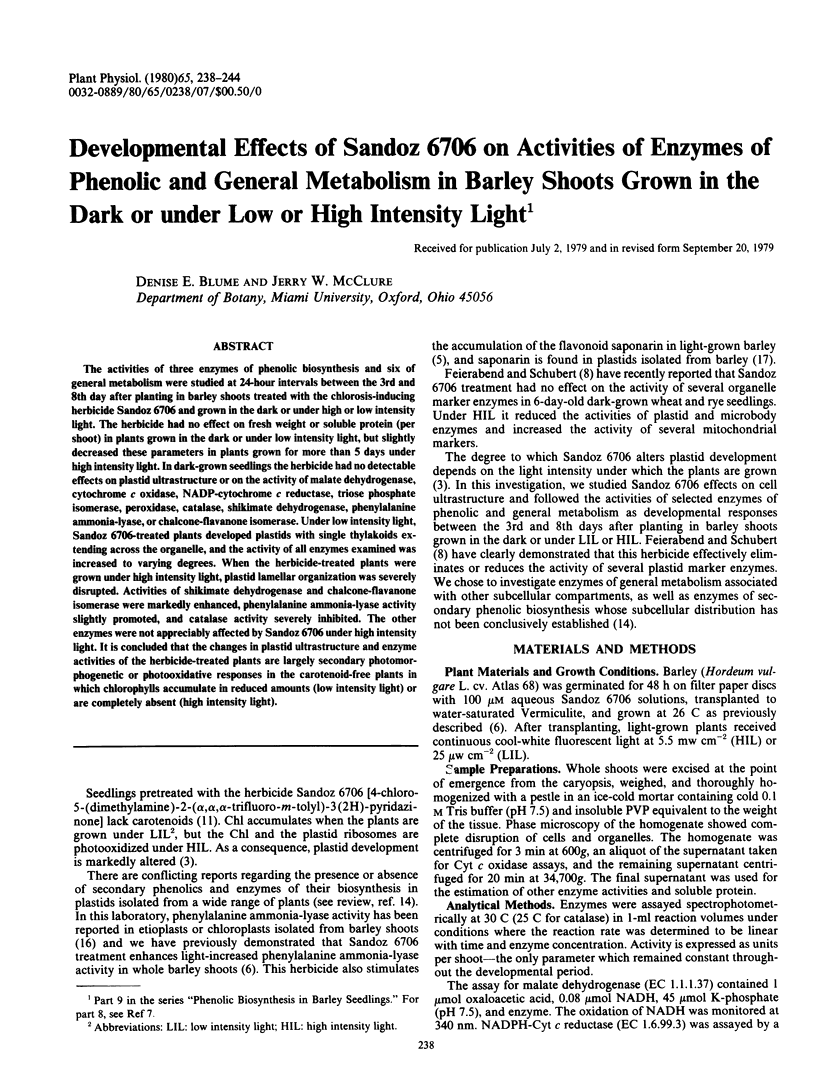
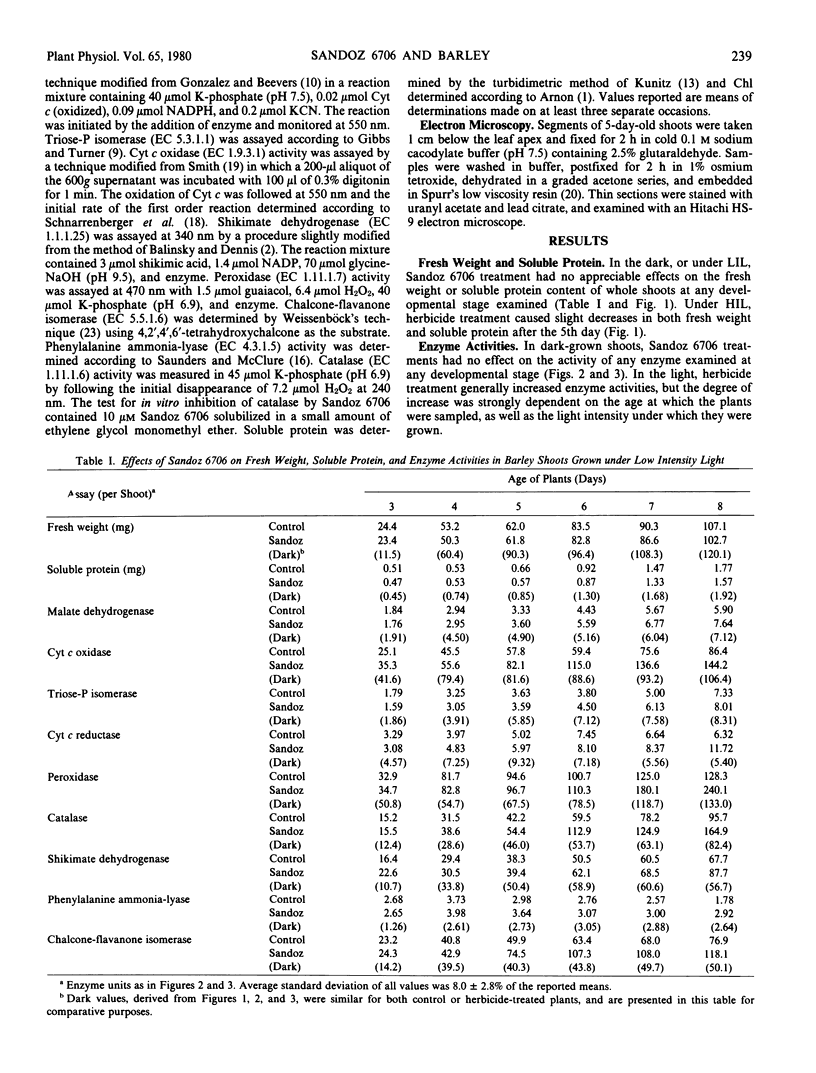
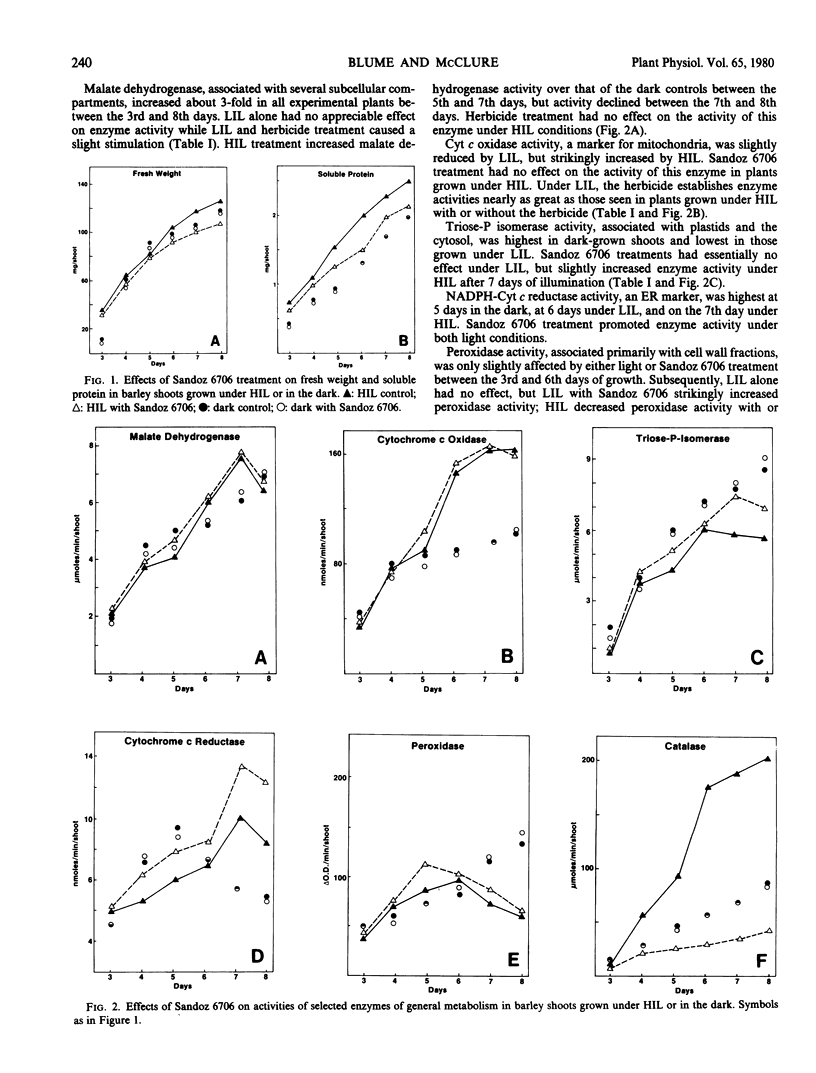
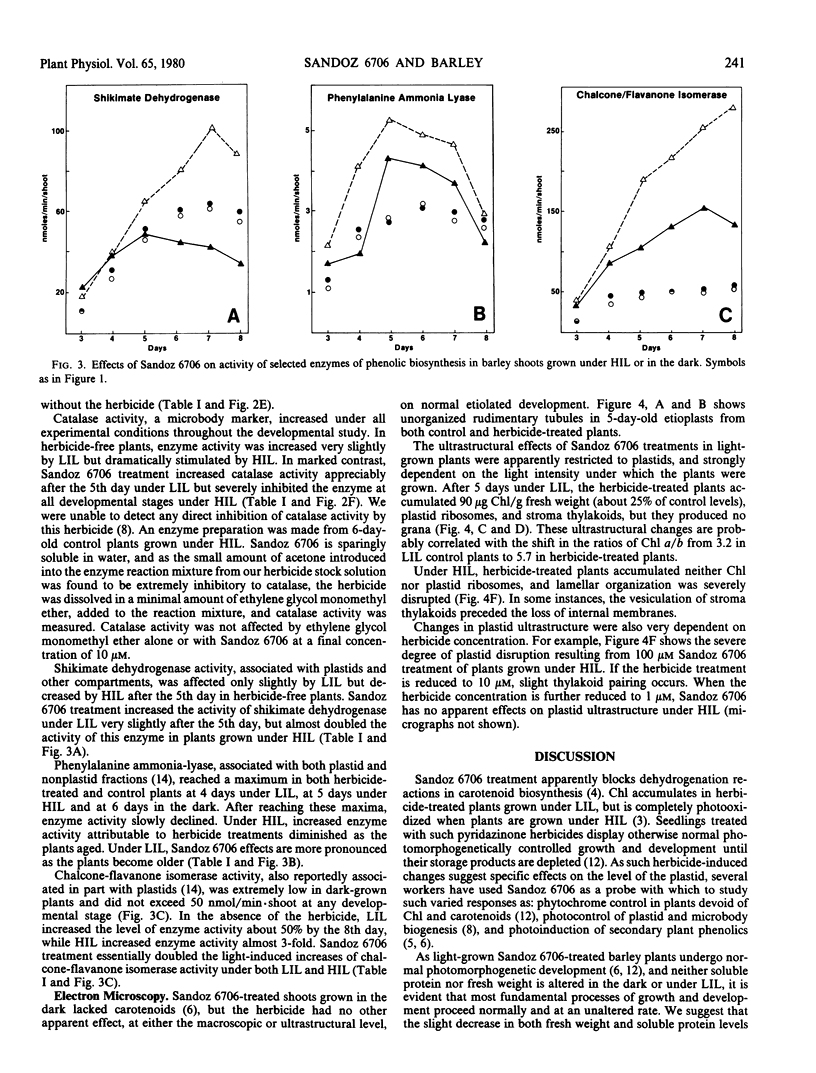
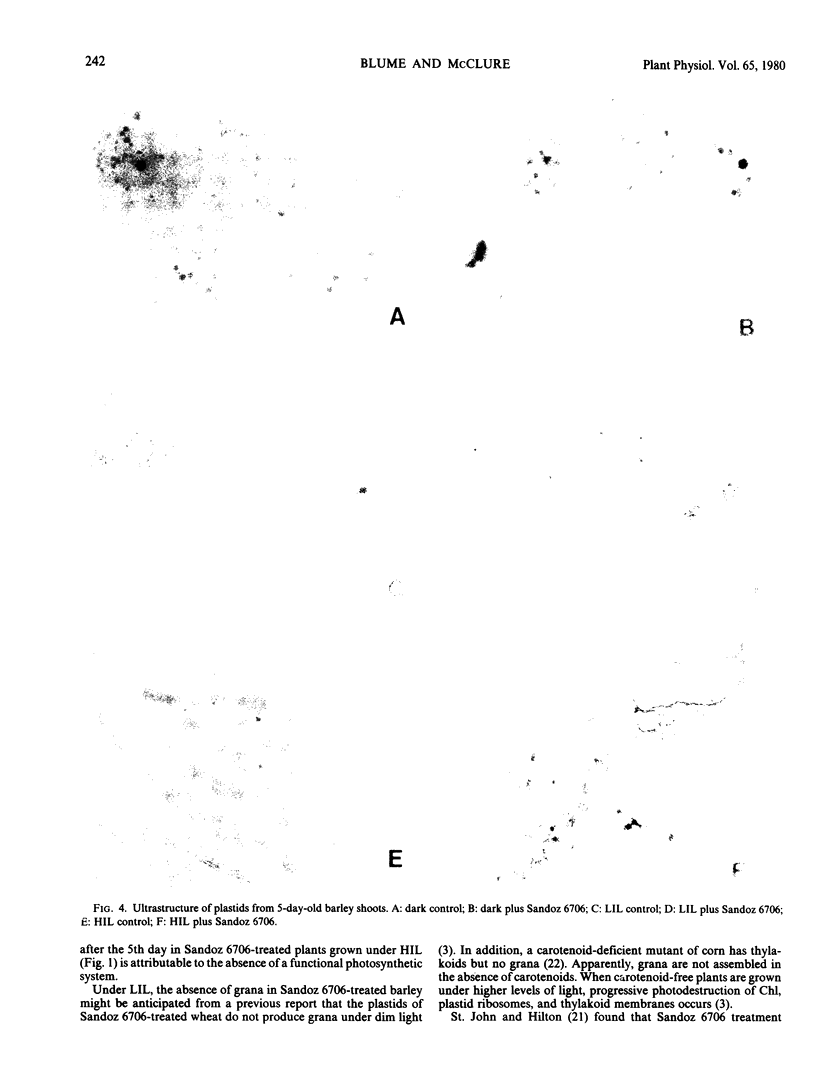
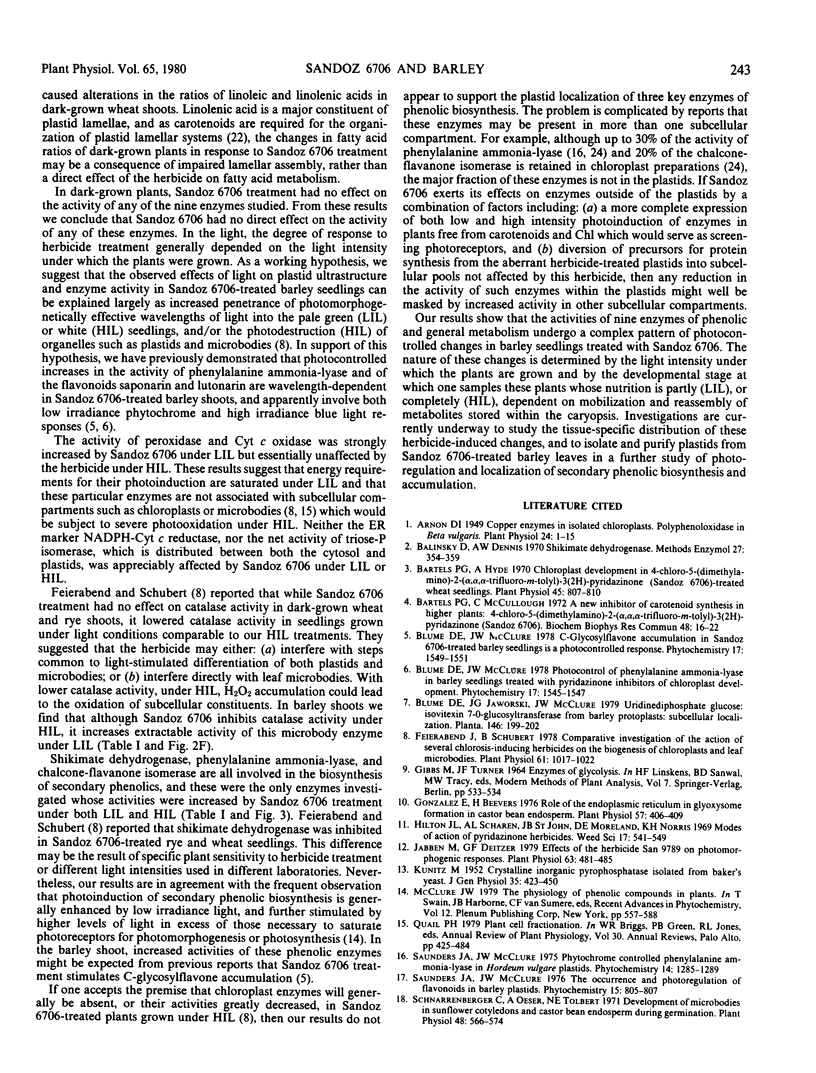

Images in this article
Selected References
These references are in PubMed. This may not be the complete list of references from this article.
- Arnon D. I. COPPER ENZYMES IN ISOLATED CHLOROPLASTS. POLYPHENOLOXIDASE IN BETA VULGARIS. Plant Physiol. 1949 Jan;24(1):1–15. doi: 10.1104/pp.24.1.1. [DOI] [PMC free article] [PubMed] [Google Scholar]
- Bartels P. G., Hyde A. Chloroplast Development in 4-Chloro-5-(dimethylamino)-2-(alpha,alpha,alpha-trifluoro-m-tolyl)-3 (2H)-pyridazinone (Sandoz 6706)-treated Wheat Seedlings: A Pigment, Ultrastructural, and Ultracentrifugal Study. Plant Physiol. 1970 Jun;45(6):807–810. doi: 10.1104/pp.45.6.807. [DOI] [PMC free article] [PubMed] [Google Scholar]
- Bartels P. G., McCullough C. A new inhibitor of carotenoid synthesis in higher plants: 4-chloro-5-(dimethylamino)-2- , , ,(trifluoro-m-tolyl)-3(2H)-pyridazinone. Biochem Biophys Res Commun. 1972 Jul 11;48(1):16–22. doi: 10.1016/0006-291x(72)90337-3. [DOI] [PubMed] [Google Scholar]
- Feierabend J., Schubert B. Comparative Investigation of the Action of Several Chlorosis-inducing Herbicides on the Biogenesis of Chloroplasts and Leaf Microbodies. Plant Physiol. 1978 Jun;61(6):1017–1022. doi: 10.1104/pp.61.6.1017. [DOI] [PMC free article] [PubMed] [Google Scholar]
- Gonzalez E., Beevers H. Role of the endoplasmic reticulum in glyoxysome formation in castor bean endosperm. Plant Physiol. 1976 Mar;57(3):406–409. doi: 10.1104/pp.57.3.406. [DOI] [PMC free article] [PubMed] [Google Scholar]
- Jabben M., Deitzer G. F. Effects of the herbicide san 9789 on photomorphogenic responses. Plant Physiol. 1979 Mar;63(3):481–485. doi: 10.1104/pp.63.3.481. [DOI] [PMC free article] [PubMed] [Google Scholar]
- KUNITZ M. Crystalline inorganic pyrophosphatase isolated from baker's yeast. J Gen Physiol. 1952 Jan;35(3):423–450. doi: 10.1085/jgp.35.3.423. [DOI] [PMC free article] [PubMed] [Google Scholar]
- Schnarrenberger C., Oeser A., Tolbert N. E. Development of Microbodies in Sunflower Cotyledons and Castor Bean Endosperm during Germination. Plant Physiol. 1971 Nov;48(5):566–574. doi: 10.1104/pp.48.5.566. [DOI] [PMC free article] [PubMed] [Google Scholar]
- Spurr A. R. A low-viscosity epoxy resin embedding medium for electron microscopy. J Ultrastruct Res. 1969 Jan;26(1):31–43. doi: 10.1016/s0022-5320(69)90033-1. [DOI] [PubMed] [Google Scholar]



